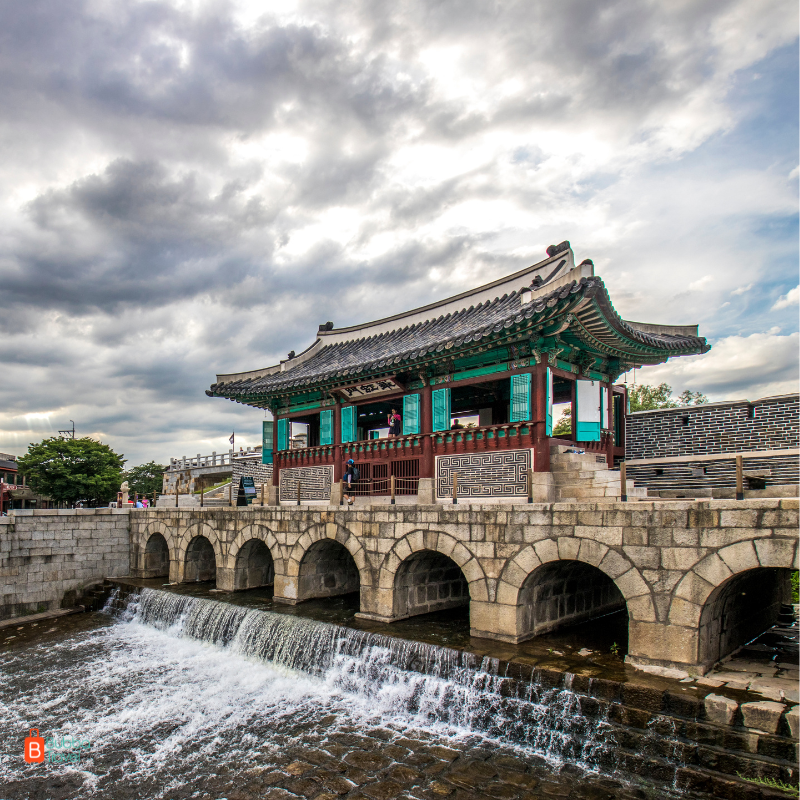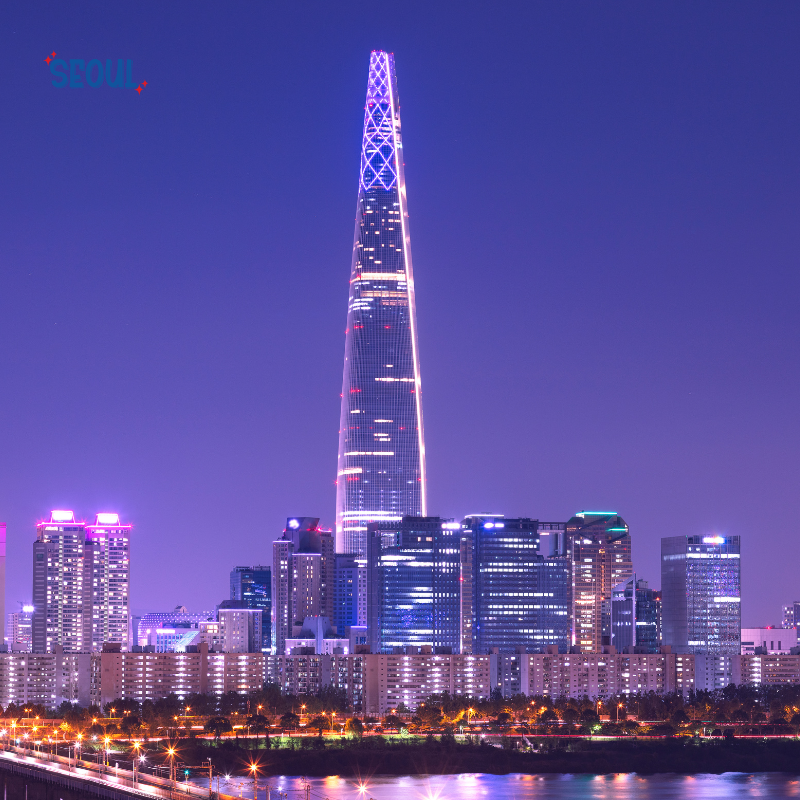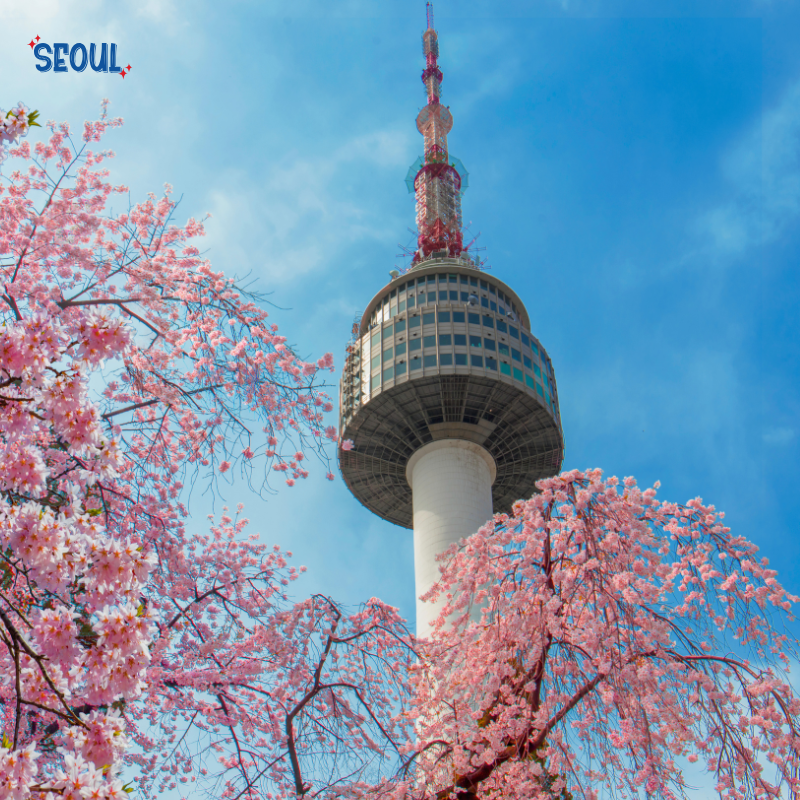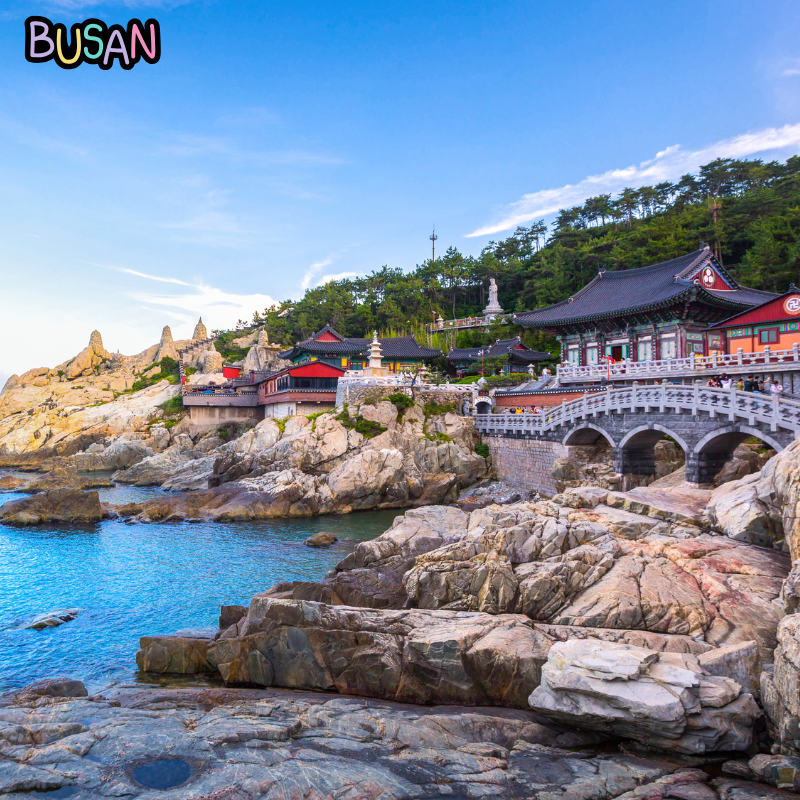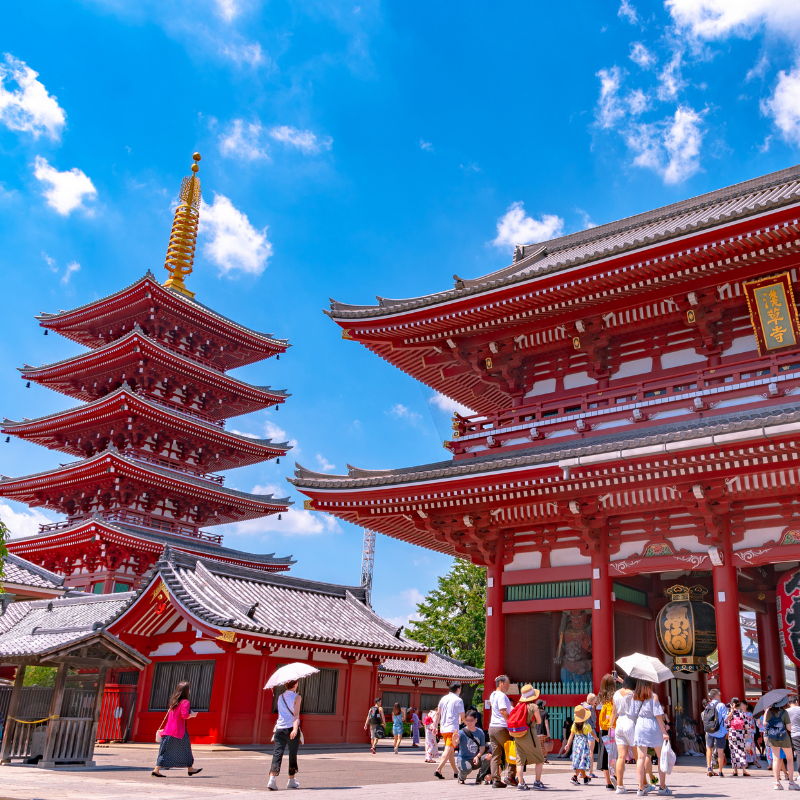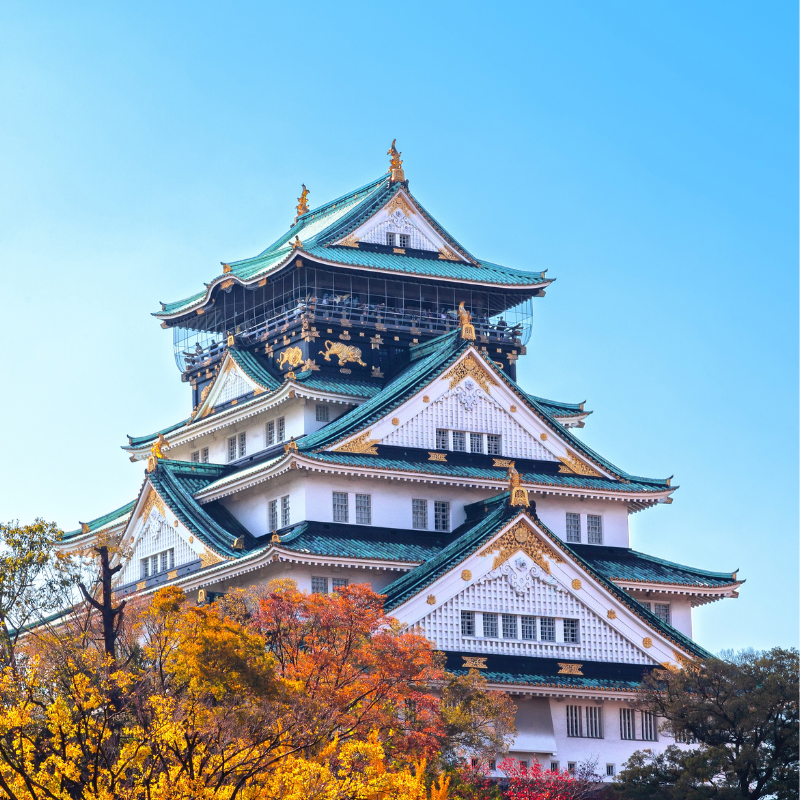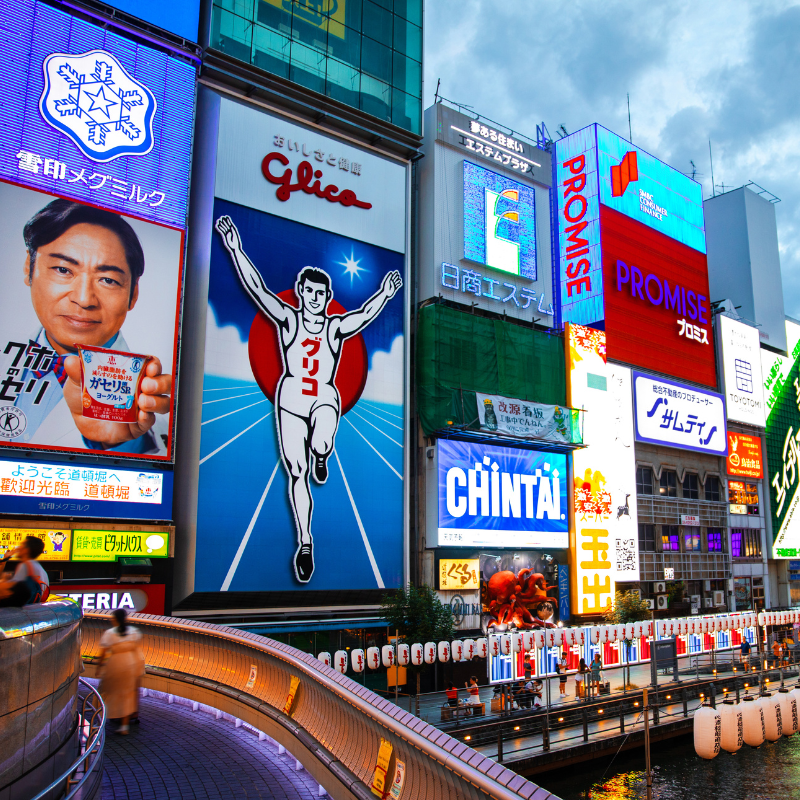Discover the Essence of Korea and Japan in this fascinating tour of:
Seoul, Suwon, Jeonju, Busan, Osaka, Mount Koya, Kyoto, Kanazawa, Takayama, Tokyo.
From vibrant Seoul to fascinating Tokyo, this unique experience will take you to explore the best of Korea and Japan. Delve into the history of the DMZ, the demilitarized zone that divides the two Koreas, and stroll the tranquil paths of the Damyang Bamboo Forest. Experience the magic of Mount Koya, a spiritual place with centuries-old monasteries, and marvel at the golden glow of the Kinkakuji in Kyoto.
In Japan, discover the harmony between tradition and modernity: from historic temples and castles to Tokyo’s bustling avant-garde neighborhoods. Tour World Heritage villages such as Shirakawago, with its unique rooftop houses, and immerse yourself in the local culture with unforgettable dining experiences.
Highlights:
- Highlights: 3 nights accommodation in Tokyo and 3 nights in Seoul. Double sharing guaranteed Guided tours in Seoul, Tokyo, Kyoto and Kanazawa. Included entrance fee to Damyang Bamboo Forest and Shirakawago National Park. Buddhist monastery lodging experience at Mount Koya, with vegetarian dinner and Zen meditation practice. Changing of the guard ceremony at Gyeongbokgung Palace in Seoul. Visits to iconic temples such as Haedong Yonggung in Busan, Kinkakuji in Kyoto and Sensoji in Tokyo. Typical Korean and Japanese lunches, with local specialties such as bamboo rice and gochujang. Stroll through iconic neighborhoods: Myeongdong in Seoul
Departure from Ezeiza International Airport to Seoul (via Ethiopia). Overnight on board.
Arrival at Ethiopia International Airport to board the connecting flight to Seoul. Overnight on board.
Transfer to your hotel and free time. You will receive information for the beginning of your tour. Accommodation
Early departure to the CHEORWON region and its section of the DMZ, the Demilitarized Zone that marks the separation between the two Koreas. We will explore the Second Tunnel, secretly dug by the North's army and discovered in 1975. Next, we drive to the Cheorwon Peace Observatory, which offers a panoramic view of the DMZ and the first villages of North Korea. Inside is a small museum that tells about the inter-Korean War. The tour continues with a visit to the disused Woljeong-ri Railway Station. We will also visit the Baek Ma Battle Memorial, which tells of the intervention of a French UN battalion during the fighting. Lunch included. Finally, we will visit a place where the typical Korean rice liquor “Makgeolli” is made. Return to Seoul.
Important Note: Remember to bring your passport, it is mandatory. The DMZ is a military zone and could be closed suddenly without prior notice. If this happens, an alternative tour will be provided.
Important Note: Remember to bring your passport, it is mandatory.
Afterwards, with our guide we will go to City Hall to see this Tsunami-shaped building. In front of the City Hall is the Deoksugung Palace, which allows us to appreciate together the tradition and modernity in this country. Afterwards, we will walk to the Myeongdong district, the largest shopping and living area in Korea, its name means ‘shining tunnel’. Dinner included at a local restaurant. Return on the modern Seoul Metro (ticket included). Lodging.
Breakfast. Today we include a long visit of about five hours in Seoul. We will visit the Changdeokgung Palace, a World Heritage Site, a set of palaces within a large park. After that we will walk through Bukchon Hanok village, a traditional historic district of small houses. Later we will visit the War Memorial, an impressive war museum that illustrates the conflicts experienced in Korea throughout history, especially the Korean War in which soldiers from many countries participated with the United Nations. Lunch included in a local restaurant. We continue to Gangnam District, one of the busiest areas of the city, where numerous shopping and entertainment centers are located. Finally, we stop at LOTTE WORLD TOWER, an impressive 550-meter high building, where you will have free time to climb the tower (entrance fee not included) or stroll through its park or luxury shopping malls. Return to the hotel and free time. Overnight.
Breakfast. Today we will visit the Gyeongbokgung Palace, an impressive palace with 600 years of history, where we will attend -if it takes place- the changing of the guard ceremony. Departure from Seoul to the south of Korea. We arrive in SUWON, the ancient capital of Korea, known for its impressive World Heritage Walls.
We will see the impressive wall with its fortifications and visit Hwaseong Haenggung, the summer palace. Lunch included. We continue route to JEONJU, we know its fascinating old town (hanok village), with all its houses, traditional stores and art galleries. Overnight stay.
Breakfast. Departure to SUNCHANG GOCHUJANG VILLAGE at the foot of Amisan Mountain, with its hanok and courtyards filled with clay pots, known as hang-a-ri, is home to expert gochujang (Korean chili paste) artisans who use traditional methods. We will enjoy the experience of learning how this traditional sauce is prepared. Afterwards, departure to DAMYANG where we will visit the Juknokwon Bamboo Forest whose paths have been declared the most beautiful in the country, perfect for meditating quietly and feeling the cool breeze. We will find all kinds of products made from this tree, which is studied and venerated in centers such as the Bamboo Museum. Lunch included, we will taste the typical rice dish served and cooked in a bamboo stalk. Among breathtaking mountain scenery covered with forests we arrive at HAEINSA to visit one of the most important Buddhist temples in the country and a UNESCO World Heritage Site. Built in 802, here is kept the Tripitaka, the most complete collection of Buddhist texts engraved on 80,000 wooden tablets. Continuation to BUSAN. We are in the second city of Korea, with a hectic life. Overnight stay.
Breakfast. In the morning, we will leave Busan to visit HAEDONG YONGGUNG, a 14th century Buddhist temple located by the sea. Return to Busan. We will visit the United Nations Memorial, with its cemetery where people from many countries are buried. We will approach the largest fish market in this country which is located next to the port of Nampo. Lunch included in a local restaurant. Later, transfer to the airport to take flight (included) to the city of OSAKA. Transfer to the hotel and accommodation.
Overnight. At 11:30 a.m. we will leave the city towards the sacred mountain of MOUNT KOYA, the most important center of Shingon Buddhism in Japan. On this mountain, a place of pilgrimage and magic, there are 120 temples and monasteries, we will visit the Okuno Mausoleum, a spiritual place and immense cemetery in nature with more than 200 000 tombs. We will visit the Kongobuji temple built in 1593. Overnight stay.
Note: In winter, because it gets dark earlier, there will not be time to enter the interior of the Kongobuji Temple.
Tonight we will stay in a Buddhist monastery. The monks will give us a Zen meditation practice (Ajikan). Dinner included (vegetarian meal). If you wish, you can attend the early morning religious ceremony at the temple.
Note: We consider the accommodation at the monastery to be an experience of great experiential value. The existing rooms are simple, without bathrooms, in traditional Japanese style with tatami mats. Bathrooms are communal.
Note: We cannot guarantee meditation practice on busy tourist dates. The capacity of accommodation in temples on Mount Koya is limited, on some occasions we may be able to accommodate groups in hotels in nearby places (providing half board).
Japanese breakfast at the temple. Early departure to KIOTO, we will have the whole day in the city that was the capital of Japan from the year 794 to 1868 hosting the seat of the Imperial Court. This city during the Second World War was the only major Japanese city that was not bombed, for this reason it retains its rich artistic heritage, in Kyoto was signed in 1997 the protocol that seeks to limit emissions of greenhouse gases.
We will include a visit of the main points of the city. We will visit the wonderful Shinto shrine of Fushimi Inari; the Imperial Palace and the temple of Kinkakuji, “the golden pavilion” with its magnificent gardens.
After that a time before a walk in GION, the traditional district full of life and popular for its Geisha. Free time at leisure. Overnight.
After breakfast we leave following one of the largest lakes in Japan, short stop at Shirahige Ginra, a small shrine by the lake. Arrival at EIHEI -JI, where we include entrance to this temple-monastery, center of Zen Buddhism in Japan, founded in 1244, its environment, its architecture, its gardens, its spiritual atmosphere make it a training center for monks, where Zazen meditation is practiced and a strict daily regimen is followed. After that in KATSUYAMA, we visit three points: the MUSEUM OF DINOSAURS located in the largest site of dinosaur remains in Japan, free time for lunch and visit the didactic museum (with more than 40 skeletons of different dinosaurs). We also visit THE GREAT BUDA of ECHIZEN, with its large temple and its five-story PAGODA (we can climb to contemplate the view). After that the peace of nature, walking through the forest of tall cedars in the Shinto shrine of Heisenji Hakusan, founded in 717 at the foot of a sacred mountain. Arrival in KANAZAWA in the late afternoon. Overnight.
Breakfast. Full day in KANAZAWA, in the morning we visit the city, a city that rivaled Kyoto and Tokyo throughout history. During World War II it escaped destruction by air raids. We will visit the castle area, with its walls, stroll through the historic district of Nagamachi, an area where the samurai and their families used to reside. The area retains a historic atmosphere with the remaining residences, earthen walls, private entrance gates, narrow alleys and water channels. We will include entrance to Kenrokuen, one of the three most beautiful gardens in Japan. We will finish the visit at Omicho, a lively traditional market with many places to have lunch. Free afternoon. Overnight.
Breakfast. Today, among beautiful landscapes of mountains, forests and traditional villages we will visit the region of Gokayama and Shirakawago, its villages have been declared a World Heritage Site, the name of the traditional houses means “hands in prayer” for its steep roofs (resembling monks' hands joined in prayer) designed to withstand the heavy snowfall of winter. We will stop at AINOKURA, a small village full of charm and SHIRAKAWA- GO OGUIMACHI, a popular older village. Time for a walk and lunch. After that we continue to TAKAYAMA where we include the HIDA museum/village, in a peaceful setting exhibiting more than 30 traditional houses of the region built during the Edo Period (1603-1868) and relocated from their original locations to create the museum in 1971. The buildings display tools and utensils used in daily life in the past. We then have time in the old part of the city, with its wooden houses and traditional stores. Lodging.
After breakfast we leave for HIDA FURUKAWA, stroll through the old town. Its festival-festival has been declared by Unesco Intangible Heritage of Humanity, with its large drums and beautifully decorated floats. We will include the entrance to the museum that tells us about the festival and shows us the floats, costumes and drums that are used. We continue our route crossing the Japanese Alps, with its snowy landscapes most of the year. MATSUMOTO, arrival in this tourist city where we will visit its impressive castle known as the “castle of the crows” for its black color and dating from the sixteenth century. Afterwards, free time for lunch and a stroll. Mid-afternoon departure back to TOKYO, arrival at the end of the day. Overnight stay.
In the morning, we will take a long tour, approximately five hours, with our guide through this simply breathtaking city! Its frenetic activity, its avant-garde neighborhoods coexist with peaceful areas. We will make a brief stop at Zojoji Temple to photograph the most beautiful image of the Tokyo Tower. The hundreds and hundreds of Jizos, deities carved in stone and considered guardians of children, who are adorned with woolen caps, bibs and windmills, stand out. We will then head to the famous Shibuya Crossing, said to be the busiest crossing in the world. We will go to Meiji Temple dedicated to the spirits of Emperor Meiji and his wife. We will continue with our bus along the elegant Omotesando Avenue. We will tour the most beautiful part of the Imperial Palace and gardens. We will stop to visit the famous Nijubashi Bridge. We will cross the district of Akihabara, the “Electric City”, the center of Japanese Manga and Anime; we will pass by the Kokugikan, the Sumo stadium, the Japanese sport. We will finish our tour in Asakusa, visiting the Sensoji Temple and the famous Nakamise Street. Lunch included at a local restaurant. Return to hotel.
18.30 hrs.- Meeting our guide at the hotel reception, we will take the subway (tickets included) to Shinjuku area. Afterwards, we will take a walk to the restaurant to discover this area with its lively nightlife. Dinner included at a local restaurant. Return to the hotel again by subway accompanied by our guide.
After breakfast, free day. Lodging.
After breakfast, free time until transfer to Tokyo airport for your return flight to Buenos Aires (via Ethiopia). Overnight on board.
Arrival at Ethiopia Airport for your connecting flight to Buenos Aires. Arrival in Buenos Aires.
END OF OUR SERVICES.
Includes
Cost Includes
- Air ticket in economy class Bs As/Seoul//Tokyo/Bs As via Ethiopia.
- Arrival and departure transfers.
- 14 nights accommodation with buffet breakfast
- 9 Lunches or Dinners Included in: Seoul, Seoul, Seoul, Seoul, Suwon, Damyang, Busan, Mt. Koya, Tokyo, Tokyo.
- Tour including: Seoul (3 nights), Suwon, Joenju (1 night), Damyang, Haeinsa, Busan (1 night), Osaka (1 night), Mt. Koya (1 night), Kyoto (1 night), Eihei-ji, Katsuyama, Katsuyama, Katsuyama, Kanazawa (2 nights), Ainokura, Shirakawago, Hida Village, Takayama (1 night), Hida Furukawa, Matsumoto, Tokyo (3 nights).
- Bus tour with English speaking guide.
- Excursion: DMZ Cheorwon in Seoul.
- Panoramic tour in: Seoul, Busan, Kyoto, Kanazawa, Tokyo.
- Night Transfer: Myeondong district in Seoul, Gion traditional district in Kyoto.
- Experiences: preparation of traditional sauce in Sunchang Gochujang Village.
- Tickets: DMZ Cheorwon (Second Tunnel, Peace Observatory, typical rice liquor factory), Seoul Metro, Changdeokgung Palace, Bukchon Hanok Village, Korean War Memorial, Gyeongbokgung Palace in Seoul, Suwon Fortress, Hwaseong Haenggung Summer Palace in Suwon, Hanok Village in Jeonju, Juknokwon Bamboo Forest and Bamboo Museum in Damyang, Haeinsa Buddhist Temple in Haeinsa, Haedong Yongung Temple, United Nations Memorial in Busan, Okuno Mausoleum, Kongobuji Temple and Ajikan or Zazen meditation at Mount Koya, Fushimi Inari Shrine, Imperial Palace, Kinkaku-ji Temple in Kyoto, Shirahige Ginra Shrine and Eihei-Ji Shrine Temple, Dinosaur Museum, Big Buddha and Echizen Pagoda, Heisenji Hakusan Shinto Shrine in Katsuyama-Dinosaur Museum, Kenrokuen Garden in Kanazawa, Small Village in Ainokura, Shirakawa-go Oguimachi Village, Hida Village Museum, Hida Furukawa Museum, Matsumoto Castle, Zojoji Temple, Meiji Temple, Sensoji Temple in Tokyo.
- Flights Included: Busan-Osaka.
- Universal Assistance travel assistance with cancellation insurance (up to 70 years of age).
- * Accompanying person of Piedmont Organization from Buenos Aires, with a minimum of 20 registered passengers *.
Cost Excludes
- All services indicated as not included.










